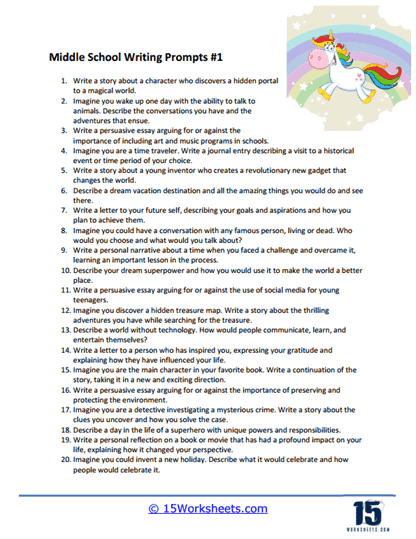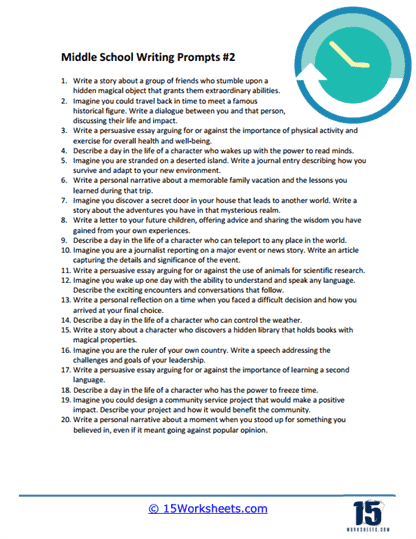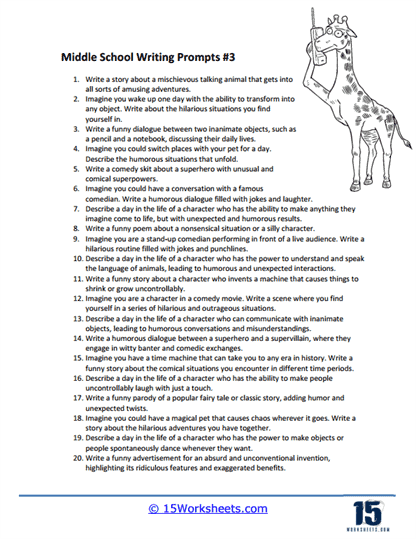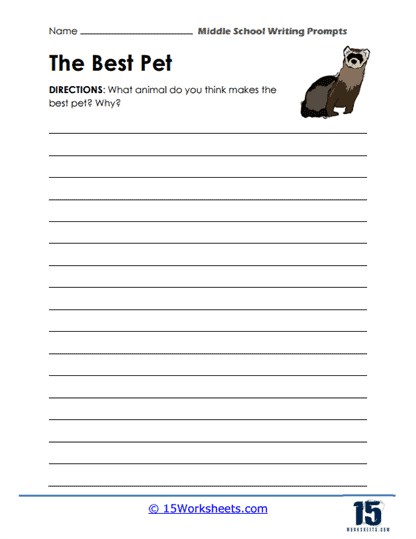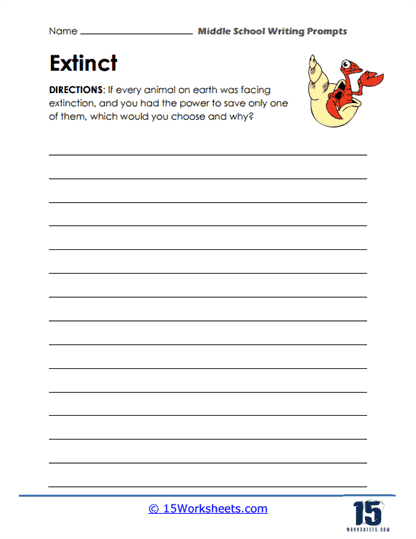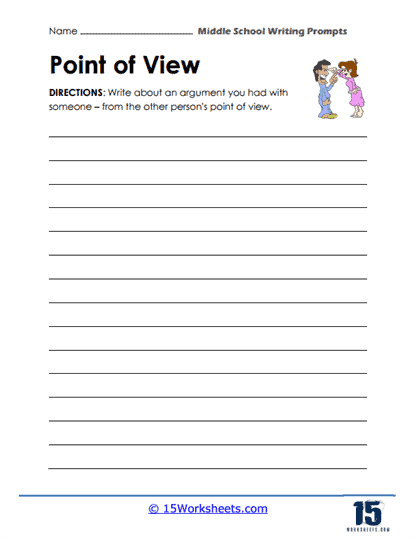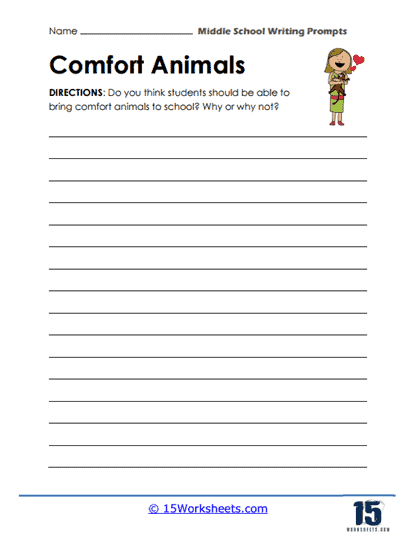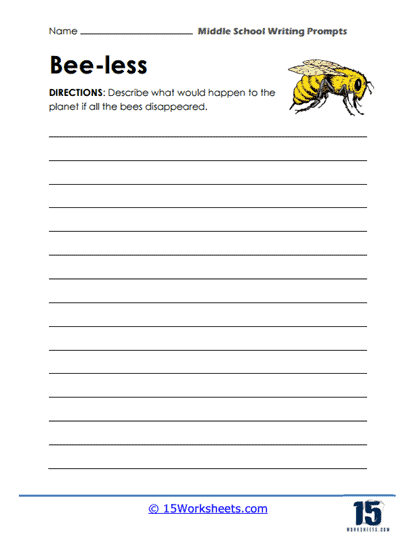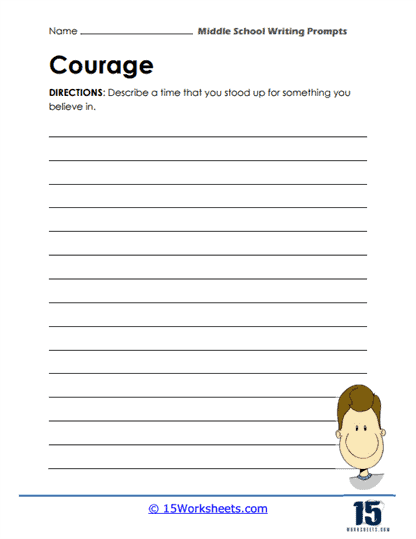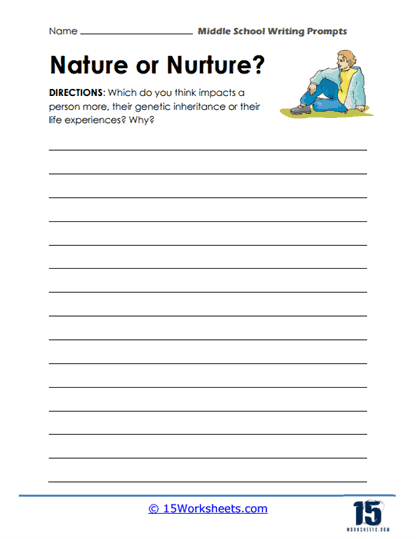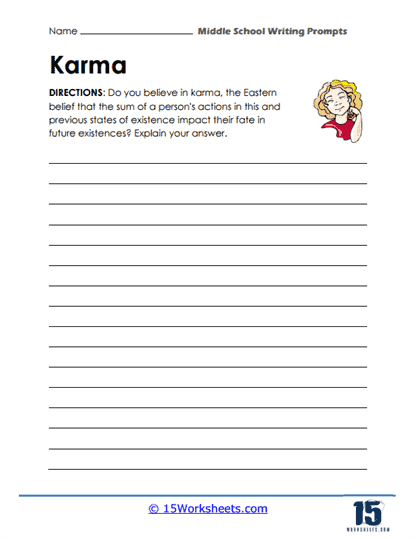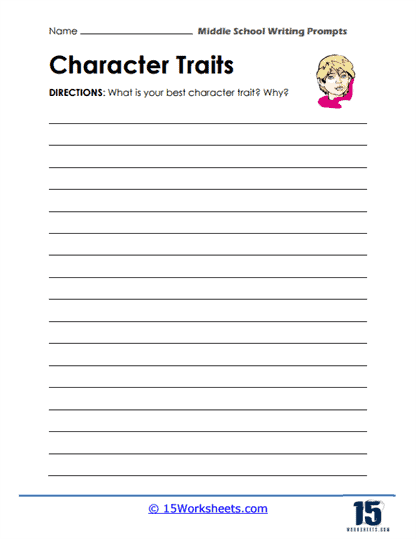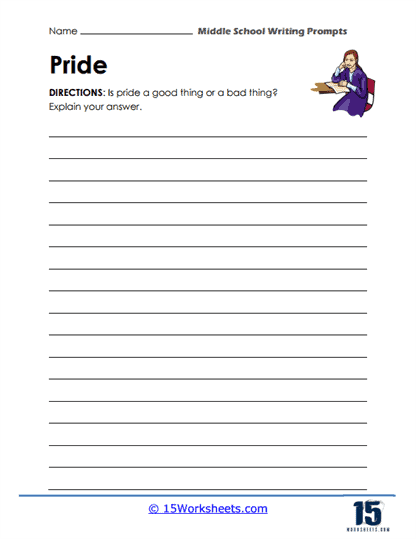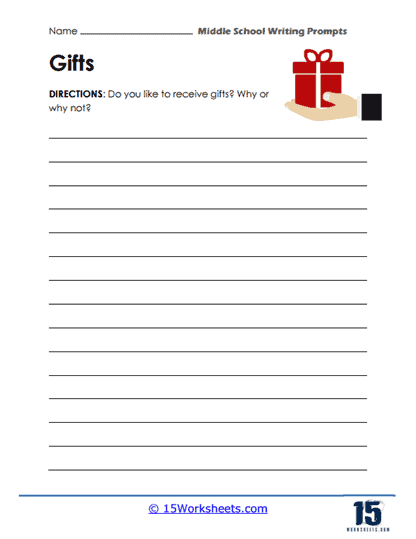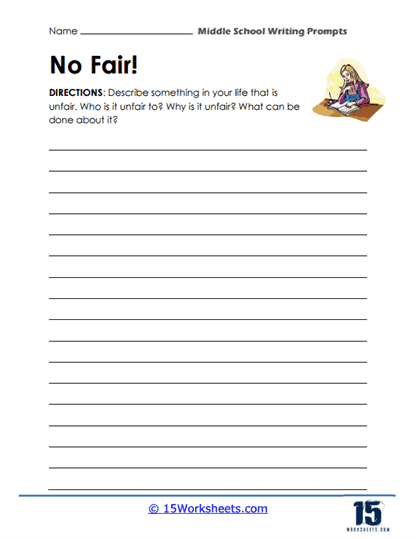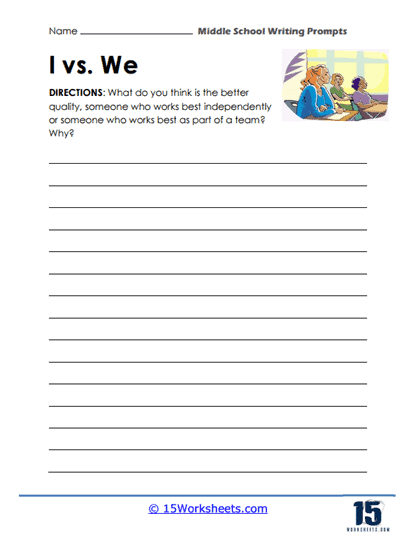Middle School Worksheets
All About These 15 Worksheets
Middle school writing prompts are topics, questions, or statements designed to inspire middle school students (typically grades 6-8) to write. They can be used in various subjects and are usually tailored to the skill level and interests of middle school students.
These prompts can serve multiple purposes, such as to develop writing skills, encourage creative expression, enhance critical thinking, or assess comprehension of a particular topic. They can be used for different types of writing, including persuasive, expository, narrative, descriptive, and creative writing.
Here are a few examples:
Persuasive: “Should middle school students have less homework? Write an essay arguing for or against this issue.”
Expository: “Choose an animal you find interesting. Research and write a report about its habitat, diet, and behavior.”
Narrative: “Write a short story about a character who finds a mysterious map in their attic.”
Descriptive: “Describe your favorite place in the world. Use vivid sensory details to make the reader feel as though they are there.”
Creative: “Imagine you could time travel. Where would you go, and what would you do?”
These prompts are typically given as part of writing assignments to help students practice various aspects of writing, such as constructing a thesis, using evidence to support arguments, organizing thoughts coherently, using proper grammar and punctuation, and revising and editing their work.
How to Help Middle Schoolers Become Better Writers
Improving middle school students’ writing skills involves an assortment of strategies and a balance between practical instruction and supportive encouragement. Regular practice is fundamental, making writing a routine activity, whether that’s through journaling, crafting stories, or working on writing exercises. This goes hand in hand with teaching the mechanics of writing, which includes focusing on aspects such as grammar, punctuation, and sentence structure, helping students to grasp these essential conventions.
Enhancing students’ vocabulary is another crucial element; wide-ranging reading and the use of a thesaurus to explore new words can significantly boost their lexical repertoire and, subsequently, their writing skills. The planning process, which involves brainstorming ideas, outlining, and structuring their writing, can aid in organizing their thoughts and smoothing the writing process.
Students should also be taught that writing often involves multiple drafts and revisions. They should be encouraged to self-edit, checking their work for clarity, coherence, and any errors. Peer review can be an effective tool, where students learn to give and receive feedback, promoting a critical perspective on their own work. Reading widely can expose students to various writing styles, structures, and tones, offering them different techniques to apply in their own writing.
A diverse writing experience is beneficial; hence, students should be encouraged to write different types of texts like stories, reports, and persuasive essays. Such diversity can help them get a handle on various writing styles and techniques. Furthermore, positive reinforcement and praising good work can boost students’ confidence and drive them to continuously improve. Finally, providing engaging writing prompts can stimulate creativity, helping students explore various topics, discover their voice, and experiment with different styles and genres.
Each student’s journey with writing is unique, so it’s essential to adapt to the individual needs of each one. Writing is a complex skill that takes time to develop, so maintaining patience and persistence are key.

